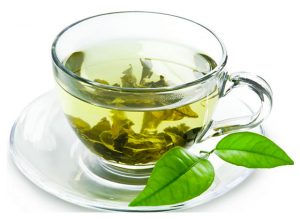East Java Green Tea is believed to have an abundant amount of catechins. Green tea extract is rich in polyphenol compounds, mostly flavanols, commonly known as catechins. The main catechins in green tea are (-)-epicatechin (EC), (-)-epicatechin-3-gallate (ECG), (-)-epigallocatechin (EGC), (-)-epigallocatechin-3-gallate (EGCG), (+)-catechin (C), (+)-gallocatechin (GC), (-)-gallocatechin-3-gallate (GCG) dan (+)-catechin-3-gallate (CG).
Based on in vitro and in vivo studies, catechin has strong antioxidants. Green tea has been known to have many health benefits, for example as an immunomodulator, anti-bacterial, anti-fungal, improve bone resorption, and increase bone formation.
Nowadays, cosmetic and facial aesthetics are considered important in society. A good facial profile and aesthetics can be achieved through orthodontic treatment. Orthodontic treatment is treatment that straightens teeth to achieve occlusion and facial aesthetic functions. Orthodontic tooth movement (PGO) is part of orthodontic treatment that can move teeth in the alveolar bone through orthodontic power. PGO can induce and stimulate various biochemical, cytokine, chemokine, and cellular activities in periodontal tissue that allow tooth movement.
Previous studies suggest that High Mobility Group Box Protein 1 (HMGB1) derived from periodontal ligament cells (PDL) can be a potential regulator in the process of PGO and periodontal tissue remodeling. PDL fibroblasts were cultured to produce HMGB1 under mechanical stress conditions. HMGB1 is induced in PDL during OTM. HMGB1 starts migrating macrophages and osteoclastogenesis. HMGB1 induces cell proliferation and differentiation of osteoblastic PDL cells.
HMGB1 works as an accessory regulator of bone metabolism during PGO. PGO can trigger cytotoxic stress due to the burden of mechanical forces that stimulate the main proteins expressed in periodontal tissues such as Heat Shock Protein (HSP). PDL has a dynamic role as a shock absorber during OTM. Furthermore, it has been mentioned that in vitro trials, microarray examination revealed that only HSP70 was increased when the PDL of human fibroblasts was exposed to mechanical stress.
Consumption of green tea has become a daily lifestyle. Patients with orthodontic treatment have the possibility to consume green tea as a daily beverage consumed. EGCG contained in green tea extract can act as a potential antioxidant activity that affects HMGB1 and HSP-70. To date, there have been no studies on the effects of the antioxidant activity of EGCG during OTM on HMGB1 and HSP-70. Thus, this study aims to investigate the expression of HMGB1 and HSP-70 during OTM in wistar rats ( Rattus Novergicus ) after administration of EGCG contained in East Java green tea methanol extract.
4.37% of the EGCG concentration was detected by HPLC in East Java green tea methanol extract using maceration techniques. The K + group (PGO only) showed a more positive expression (brown) compared to the other groups. The highest HMGB1 expression was found in the pressure side of the K + group, while the lowest HMGB1 expression was found in the tension side of the K- group (without treatment).
There was a significant decrease in HMGB1 expression between groups. The highest HSP-70 expression was found in the pressure side of the K + group, while the lowest HSP-70 expression was found in the tension side of the K-group. There was a significant decrease in HSP-70 expression between groups. The results showed that there was a significant decrease in HSP-70 and HMGB1 expression in the T2 group (PGO and EGCG for 14 days) compared to the T1 and K + groups (PGO for 14 days and EGCG for 7 days only) on both sides of the pressure and pull during PGO.
The content of EGCG in East Java green tea methanol extract can work as an antioxidant that decreases the expression of HSP-70 and HMGB1 in the alveolar bones of wistar rats with orthodontic tooth movement. (*)
Author: Alexander Patera Nugraha
Details of this research available at:
http://revista.uepb.edu.br/index.php/pboci/article/view/5347/pdf





